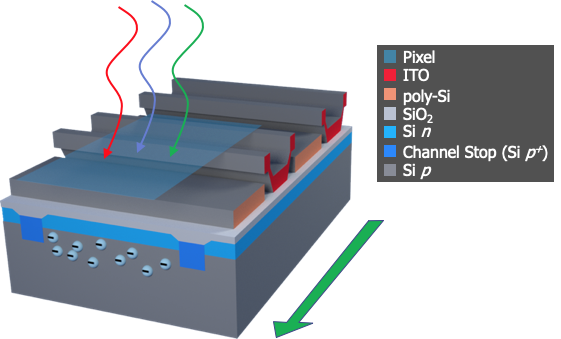
Optoelectronics components, and increasingly, silicon photonics integrated circuits, are an important part of many electronics and telecommunications systems today. These optoelectronic components can either generate optical signals from electrical signals, manipulate optical signals, or turn optical signals into electrical signals. Optoelectronics components often involve the use of compound semiconductor materials. In this course we will discuss the history of these components, the types of semiconductor materials used for these components, the applications for these components, methods to build and control the optical properties of these devices (like the bandgaps and refractive indexes), and the reliability of these devices. We will also discuss silicon photonics structures, including passive elements, resonant structures, modulators, sources and detectors. Finally, we will bring all of the concepts together and discuss various processes for producing silicon photonic integrated circuits. Optoelectronics and Silicon Photonics is a 24-hour online course that offers detailed instruction on Laser diode and LED technology, Optical ICs, Silicon Photonics, manufacturing, reliability, and characterization. This course is designed for every manager, engineer, and technician working in the LED/Solid State Lighting field, developing optical communications devices, developing sensors, detectors, Silicon Photonics ICs, using these components in electronics systems, or supplying tools to the industry.
Participants learn to develop the skills to determine what design and technology approaches should be applied, and when they should be applied. This skill-building series is divided into four segments:
- Optoelectronics Technology. A participant learns the fundamentals of optics, and how light behaves in semiconductor materials. They also discuss the behavior at interfaces, absorption, diffraction, as well as electro-optic and electro-acoustic effects. They also learn about advanced structures and concepts like plasmonics.
- Processing. Participants learn the fundamentals of optoelectronics processing. They also learn the techniques to integrate optics into CMOS, BiCMOS, and Bipolar technologies. They also are introduced to the integration of MEMS and optical devices.
- Optoelectronics Devices. Participants learn about the two major classes of optical devices: the emitter and the detector. We discuss LEDs, Laser Diodes, Photodiodes and photodetectors.
- Characterization. Participants learn how to characterize optical devices for factors such as output power, efficiency, and frequency.
- Silicon Photonics Devices. Participants learn about the various silicon photonics structures, including passive elements, resonant structures, modulators, sources and detectors. We also discuss various processes for producing silicon photonic integrated circuits.
- The course will provide participants with an in-depth understanding of Optoelectronics Technology.
- The participant will be able to determine how to evaluate a process for a given application.
- The course will identify the advantages and disadvantages various processing techniques for optoelectronic devices, sensors, and LEDs.
- The course discusses the latest developments in Silicon Photonics ICs, and how various technologies for generating, manipulating, and sensing light can come together on a silicon substrate.
- The course offers the opportunity to ask questions to experts in the field of Optoelectronics, IC processing and integration issues involving optics.
- The participant will be able to identify basic technology features on semiconductor LEDs, laser diodes, photodiodes, and photodetectors.
- The participant will be able to identify a variety of different failure mechanisms and how they manifest themselves.
- The participant will be able to identify the appropriate equipment to purchase when starting or expanding a manufacturing operation.